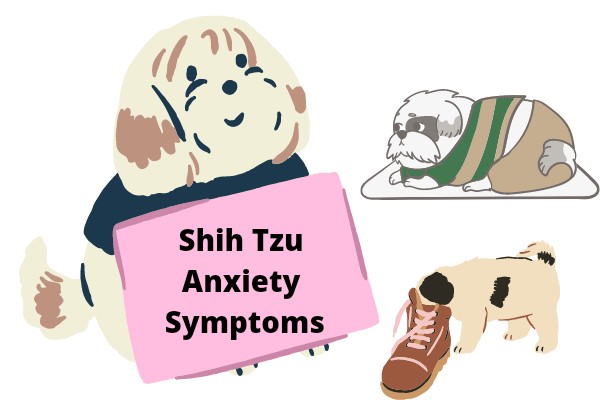How to Prevent Ear Infections in Dogs [15 Helpful Hints]
![How to Prevent Ear Infections in Dogs [15 Helpful Hints] How to Prevent Ear Infections in Dogs](https://petcreeks.com/wp-content/uploads/2023/09/pexels-mikhail-nilov-7474856.jpg)
If your furry friend has ever suffered from an ear infection, you know just how uncomfortable and frustrating it can be for both of you.
But fear not, because today we’re diving into the ultimate guide on how to prevent those pesky ear infections in dogs.
How to Prevent Ear Infections in Dogs
To prevent ear infections in dogs, it is important to regularly clean their ears using a veterinarian-approved cleaning solution.
Avoid excessive moisture in the ears by drying them thoroughly after swimming or bathing.
Regularly check for signs of infection, such as redness, swelling, or discharge, and consult a veterinarian if any issues arise.
Let’s dive deeper…
The following are some common ways of how to prevent ear infections in dogs:
1. Maintain a Balanced Diet
To prevent ear infections in dogs, it is important to maintain a balanced diet for your pet.
A healthy diet can help boost their immune system, which plays a crucial role in preventing infections, including ear infections.
A balanced diet should include high-quality, nutritious food that meets your dog’s specific nutritional needs.
Consult with your veterinarian to determine the appropriate diet for your dog based on their age, breed, and any underlying health conditions.
2. Regular Vet Check-ups
Regular veterinary check-ups are essential for preventing ear infections in dogs.
During these check-ups, the veterinarian can examine your dog’s ears and identify any early signs of infection or other issues.
They can also provide appropriate preventive measures, such as cleaning your dog’s ears, administering preventive medications, and addressing any underlying health conditions that may contribute to ear infections.
Additionally, the veterinarian can offer guidance on proper ear-cleaning techniques and recommend suitable products for your dog.
3. Keep Their Environment Clean
Keeping your dog’s environment clean is crucial in preventing ear infections.
Regularly clean your dog’s living area, including their bedding, toys, and any surfaces they frequently come into contact with.
This helps reduce the presence of dirt, bacteria, and allergens that can contribute to ear infections. Additionally, regularly groom your dog to keep their fur clean and prevent the accumulation of debris around their ears.
Avoid exposing your dog to environments with excessive moisture or irritants that can increase the risk of ear infections.
4. Prevent Foreign Objects From Getting Into Your Dog’s Ears
Preventing foreign objects from getting into your dog’s ears is an important step in preventing ear infections.
Dogs are curious animals and may easily pick up foreign objects, such as grass seeds, dirt, or insects, in their ears.
These foreign objects can cause irritation and increase the risk of infection. Regularly inspect your dog’s ears and gently remove any visible foreign objects.
It is important to handle your dog’s ears with care and avoid using sharp or pointed objects that can damage the ear canal.
If you notice any signs of irritation or infection, consult your veterinarian for proper evaluation and treatment.
5. Choose Ear-Friendly Activities
When it comes to preventing ear infections in dogs, it’s important to choose ear-friendly activities.
This means avoiding activities that can introduce excess moisture or foreign objects into the dog’s ears.
For example, swimming in dirty or contaminated water sources, such as ponds or stagnant pools, can increase the risk of ear infections.
It’s best to provide your dog with clean and treated water for swimming.
Additionally, if your dog enjoys activities that involve digging or rolling in the dirt, it’s a good idea to clean their ears afterward to remove any debris that could potentially cause irritation or infection.
6. Prompt Treatment of Other Infections
Another critical aspect of preventing ear infections in dogs is the prompt treatment of other infections.
Some dogs may be more prone to developing ear infections if they have other underlying health conditions, such as allergies or skin infections.
Treating these conditions promptly and effectively can help reduce the likelihood of secondary ear infections.
It’s important to work closely with your veterinarian to address any underlying health issues and follow their recommended treatment plan.
7. Avoid Smoke Exposure
Smoke exposure, whether from tobacco smoke or other sources, can be detrimental to a dog’s health, including their ears.
Smoke can irritate the delicate tissues in the ears and increase the risk of inflammation and infection.
It’s best to avoid exposing your dog to smoke as much as possible. If you are a smoker, consider smoking outdoors or away from your dog to minimize their exposure.
Additionally, be cautious of environmental smoke sources, such as bonfires or barbecues, and keep your dog at a safe distance to prevent smoke inhalation.
8. Avoid Moisture Buildup in Your Dog’s Ears
Moisture buildup in a dog’s ears can create a favorable environment for the growth of bacteria and yeast, leading to ear infections.
To prevent moisture buildup, you can take the following steps:
- Dry your dog’s ears after water activities: If your dog loves swimming or bathing, make sure to thoroughly dry their ears afterward. Use a clean towel or cotton balls to gently wipe away any excess moisture.
- Avoid excessive ear cleaning: While it’s important to keep your dog’s ears clean, overcleaning can strip away the natural oils and protective wax in the ear canal. This can make the ears more susceptible to infections. Follow your veterinarian’s recommendations for ear cleaning frequency and technique.
- Keep your dog’s ears dry during grooming: If you’re bathing or grooming your dog, take care to prevent water or grooming products from entering the ear canal. Use cotton balls to block the ears or be cautious around the ear area.
9. Regular Dog Ear Inspection
Regularly inspecting your dog’s ears allows you to catch any signs of infection or other issues early on.
Here’s what you can do:
- Look for redness, swelling, or discharge: Check your dog’s ears for any signs of inflammation, such as redness, swelling, or discharge. If you notice any of these symptoms, it’s important to consult your veterinarian.
- Check for excessive wax or debris: Excessive wax or debris in the ears can indicate an underlying problem. Gently examine your dog’s ear canal and outer ear for any buildup of wax, dirt, or foreign objects.
- Observe your dog’s behavior: Pay attention to any changes in your dog’s behavior, such as frequent scratching of the ears, head shaking, or tilting of the head. These could be signs of discomfort or an ear infection.
10. Trim Your Dog’s Ear Hair Regularly
Some breeds of dogs, especially those with long and floppy ears, are more prone to ear infections due to the accumulation of moisture and lack of airflow. Trimming the hair around your dog’s ears can help prevent this.
Here’s what you can do:
- Consult a professional groomer: If you’re unsure about how to trim your dog’s ear hair, it’s best to seek the help of a professional groomer. They can safely and effectively trim the hair without causing any discomfort to your dog.
- Regular maintenance: Depending on your dog’s breed and hair growth, you may need to trim the ear hair every few weeks or as recommended by your groomer. This will help maintain proper airflow and reduce the risk of moisture buildup.
11. Use Vet Recommended Ear Care Products
Using vet-recommended ear care products can help maintain the health of your dog’s ears.
Here are some tips:
- Consult your veterinarian: Your veterinarian can recommend specific ear-cleaning solutions and products that are safe and effective for your dog. They can also provide guidance on how often to use these products.
- Avoid using harsh or irritating substances: When cleaning your dog’s ears, avoid using alcohol, hydrogen peroxide, or other harsh substances that can cause irritation. Use gentle, vet-approved ear cleaning solutions instead.
- Follow instructions carefully: Read and follow the instructions provided with the ear care products. Use the recommended amount and technique for cleaning your dog’s ears to ensure safety and effectiveness.
12. Regular Dog Ear Cleaning
Regular dog ear cleaning is an important preventive measure to help reduce the risk of ear infections. It helps remove excess wax, debris, and moisture that can contribute to the growth of bacteria or yeast in the ears.
Here are some tips for proper dog ear cleaning:
- Choose the right cleaning solution: Use a veterinarian-recommended ear cleaning solution specifically designed for dogs. Avoid using alcohol-based solutions or any products that are not intended for use in dogs’ ears.
- Gently clean the outer ear: Lift the ear flap and carefully inspect the outer ear for any signs of redness, discharge, or odor. Moisten a cotton ball or soft cloth with the ear cleaning solution and gently wipe the visible part of the ear, avoiding the ear canal.
- Never insert anything deep into the ear canal: The ear canal is delicate, and inserting cotton swabs, Q-tips, or any other objects can damage the ear and potentially push debris further into the canal.
- Seek veterinary guidance for deeper cleaning: If you notice excessive wax buildup, foul odor, or any signs of infection, consult your veterinarian. They can guide you on how to safely and effectively clean the deeper parts of your dog’s ears or recommend professional cleaning if necessary.
13. Avoid Over-Bathing Your Dog
While regular bathing is important for maintaining your dog’s hygiene, over-bathing can strip the natural oils from their skin and ears, leading to dryness and increased risk of ear infections.
Here are some tips to avoid over-bathing:
- Follow bathing guidelines: Follow your veterinarian’s recommendations for how often to bathe your dog based on their breed, activity level, and individual needs. Most dogs typically require bathing every 4-12 weeks.
- Use a dog-specific shampoo: Choose a gentle, pH-balanced shampoo specifically formulated for dogs. Human shampoos can be too harsh and disrupt the natural balance of your dog’s skin and ears.
- Protect the ears during baths: When bathing your dog, take care to prevent water from entering their ears. You can use cotton balls or ear covers to create a barrier and minimize moisture exposure.
14. Always Dry Your Dog’s Ears After Bathing or Swimming
Moisture in the ears can create a favorable environment for the growth of bacteria and yeast, increasing the risk of ear infections.
Here’s how to ensure your dog’s ears are properly dried after bathing or swimming:
- Gently towel-dry the ears: After bathing or swimming, use a clean, dry towel to gently pat the ears dry. Avoid rubbing vigorously, as this can irritate the skin.
- Use a pet-safe ear drying solution: There are specific ear drying solutions available that can help evaporate excess moisture in the ears. These solutions can be applied after towel-drying, following the instructions provided by your veterinarian.
- Allow airflow: Ensure your dog’s ears have proper airflow by gently lifting and supporting the ear flap. This allows any trapped moisture to evaporate, reducing the risk of infection.
15. Watch for and Avoid Dog Allergies
Allergies can contribute to ear infections in dogs. Common allergens include certain foods, environmental factors (such as pollen or dust mites), and contact allergens (such as certain fabrics or cleaning products).
Here’s what you can do to watch for and avoid dog allergies:
- Monitor your dog for allergy symptoms: Keep an eye out for signs of allergies, such as excessive itching, redness, swelling, ear shaking, or recurrent ear infections. If you suspect your dog has allergies, consult your veterinarian for proper diagnosis and treatment.
- Identify and manage triggers: Work with your veterinarian to identify potential allergens that may be causing your dog’s allergies. Once identified, take steps to minimize exposure to those triggers. This may involve dietary changes, allergy testing, or environmental modifications.
- Maintain a clean environment: Regularly clean your home, including vacuuming and dusting, to reduce the presence of allergens. Wash your dog’s bedding frequently using hypoallergenic detergents.
- Consider allergy testing and immunotherapy: In severe cases, your veterinarian may recommend allergy testing to identify specific allergens. Immunotherapy, such as allergy shots or oral drops, may be prescribed to desensitize your dog’s immune system to those allergens.
Remember, prevention is key when it comes to ear infections in dogs. By following these preventive measures, you can help keep your dog’s ears healthy and reduce the risk of ear infections.
However, if you notice any signs of ear infection or if your dog is experiencing persistent ear issues, it is always best to consult with your veterinarian for proper diagnosis and treatment.
Read more about ear problems in dogs.
Frequently Asked Questions
What are the common causes of ear infections in dogs?
Ear infections in dogs can be caused by various factors such as allergies, excessive moisture in the ears, ear mites, foreign objects, hormonal imbalances, and underlying health conditions. Regular cleaning and proper care can help prevent these infections.
Read more about the causes of ear infections in dogs.
How often should I clean my dog’s ears to prevent infections?
The frequency of ear cleaning depends on your dog’s breed, activity level, and susceptibility to ear infections. Generally, it’s recommended to clean your dog’s ears once a month or as advised by your veterinarian. However, certain breeds with floppy ears or those prone to infections may require more frequent cleaning.
What is the best way to clean my dog’s ears?
To clean your dog’s ears, use a veterinarian-recommended ear-cleaning solution and cotton balls. Gently lift the ear flap and apply the cleaning solution, making sure not to insert anything deep into the ear canal. Then, massage the base of the ear to help distribute the solution. Finally, use a cotton ball to wipe away any debris or excess solution.
Read more about how to clean a dog’s ear.
Are there any natural remedies to prevent ear infections in dogs?
While it’s always best to consult your vet, there are some natural remedies that can help prevent ear infections in dogs. These include regularly inspecting and cleaning your dog’s ears, feeding a balanced diet to support their immune system, and avoiding excessive moisture in the ears by drying them thoroughly after baths or swimming.
Can certain dog breeds be more prone to ear infections?
Yes, certain dog breeds with droopy or hairy ears, such as Cocker Spaniels, Basset Hounds, and Poodles, are more susceptible to ear infections. This is because their ear structure can trap moisture and create a favorable environment for bacteria or yeast to grow. Regular ear maintenance is especially important for these breeds.
What signs should I look for to identify an ear infection in my dog?
Common signs of an ear infection in dogs include frequent scratching or rubbing of the ears, redness or swelling in the ear canal, a foul odor coming from the ears, discharge or wax buildup, and sensitivity or pain when the ears are touched. If you notice any of these symptoms, it’s best to consult your veterinarian for proper diagnosis and treatment.
Read more about the reasons your dog is deaf.
Conclusion
In conclusion, keeping your furry friend’s ears healthy is no walk in the park, but with these simple tips, you’ll be one step closer to preventing those pesky ear infections.
Remember to regularly clean your dog’s ears, avoid excessive moisture, and schedule routine check-ups with your vet. Your pup’s ears will thank you, and you can both enjoy countless ear-fection-filled adventures together!



![Dog Not Eating But Throwing Up [9 Reasons & Tips] Dog Not Eating But Throwing Up](https://petcreeks.com/wp-content/uploads/2023/04/Dog-Not-Eating-But-Throwing-Up-768x555.jpg)


